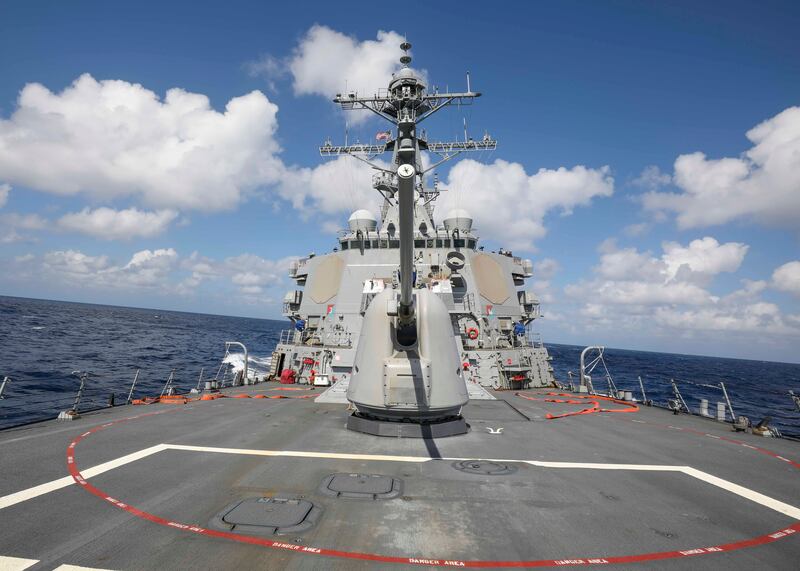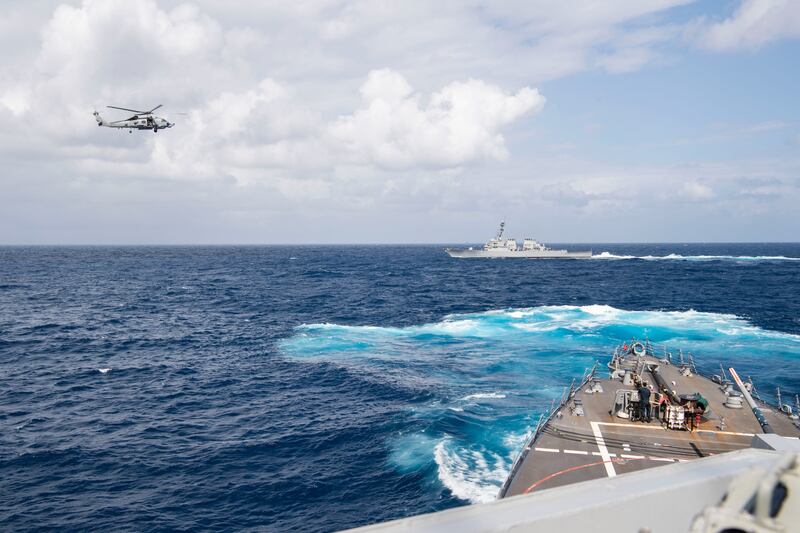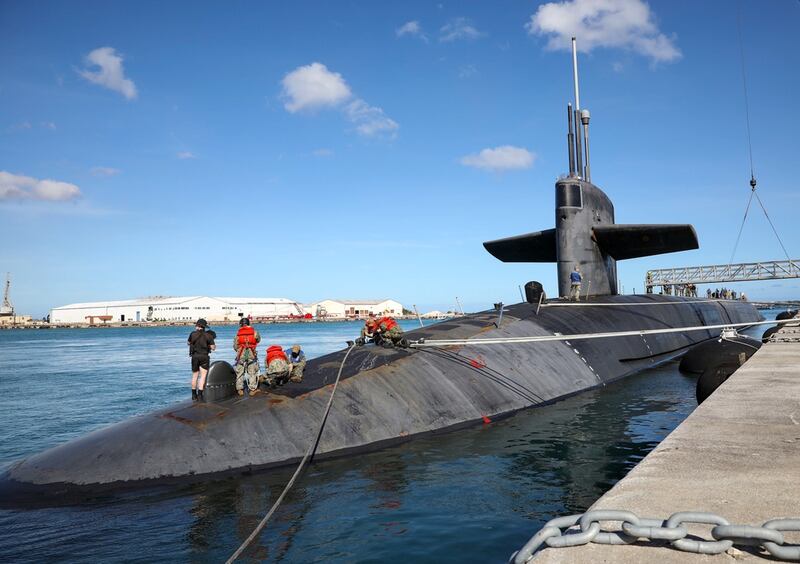China and the United States have engaged in a renewed spat over the activity of a U.S. naval ship in the South China Sea, with Washington asserting its right to navigate territorial waters and Beijing warning of “serious consequences.”
The USS Benfold guided-missile destroyer conducted a freedom of navigation operation (FONOP) in the vicinity of the Paracel Islands in the South China Sea on Thursday, the U.S. Navy's 7th Fleet said.
The Chinese military immediately responded by accusing the U.S. ship of “illegally intruded into China’s territorial waters of Xisha (Paracel islands).”
Senior Col. Tian Junli, spokesman of the Chinese People's Liberation Army (PLA) Southern Theater Command, said in a statement released on the microsite Weibo that "the actions of the U.S. side have seriously violated China's sovereignty and security."
The latest event “is another cast-iron proof that it (the United States) is pursuing navigational hegemony and militarizing the South China Sea,” the statement said.
“The PLA Southern Theater organized naval and air forces to track and monitor and warned them to leave,” it said.
This is the second time in six months the USS Benfold was accused by China of illegally entering its territorial waters, or within 12 nautical miles from the baseline self-claimed by Beijing around the whole group of Paracel islands. In a recent report, the U.S. described that claim as "unlawful."
Previously in July 2021, the PLA said it successfully “expelled” the American destroyer.
“We solemnly demand that the U.S. side immediately stop such provocative actions, otherwise it will bear the serious consequences of unforeseen events,” the new statement warned.

US response
The U.S. Navy 7th Fleet quickly responded to China’s accusation.
A revised statement said the Chinese statement about the U.S. destroyer’s mission was “false.”
“USS Benfold conducted this FONOP in accordance with international law,” it said, adding: “The operation reflects our commitment to uphold freedom of navigation and lawful uses of the sea as a principle.
“Nothing PRC (People’s Republic of China) says otherwise will deter us.”
The lengthy statement went on to explain that under international law as reflected in the Convention of the Law on the Sea (UNCLOS), ships of all states – including their warships – enjoy the right of innocent passage through the territorial sea.
“The unilateral imposition of any authorization or advance-notification requirement for innocent passage is unlawful,” it said, pointing out that not only China but Taiwan and Vietnam also demand permission or advance notification before a foreign military ship passes through their territorial sea.
“The United States challenged the unlawful restrictions imposed by the PRC, Taiwan, and Vietnam,” the 7th Fleet’s statement said.
Retired Australian Rear Adm. (retd) James Goldrick, a prominent maritime affairs analyst, explained to BenarNews: “Many U.S. FONOPs, including those in the South China Sea, are not in relation to whether a particular nation claims a feature but to what rights that nation thinks derives from the feature.”
That’s why U.S. FONOPs have “deliberately gone through the zones of not only Chinese-claimed features, but Vietnamese ones, as well as those of the Philippines,” Goldrick said.

‘Flexing naval muscles’
In another development, one of the U.S. Navy’s most powerful nuclear submarines – the USS Nevada – made a rare appearance in the Western Pacific over the weekend.
The Ohio-class ballistic-missile submarine carrying 20 Trident ballistic missiles and dozens of nuclear warheads made a port visit in the U.S. territory of Guam on Saturday. Since the 1980s the U.S. Navy has announced visits by its submarines to the Pacific island only twice and their movements are generally kept secret.
The U.S. has 14 nuclear-powered ballistic-missile submarines (SSBNs), called “boomers,” which are capable of launching precision nuclear warheads.
“This port visit to Guam reflects the United States’ commitment to the Indo-Pacific region,” Adm. Jeffrey Jablom, commander of the Submarine Force, U.S. Pacific Fleet, said in a brief statement.
Alexandre Neill, a Singapore-based defense analyst, said the port call represented a "statement" of U.S. resilience following a recent collision in the South China Sea involving the submarine USS Connecticut which struck an underwater mountain.
“Stationing a SSBN close to China is also a clear deterrent message and a message about the needs for nuclear strategic stability,” Neill said. “The U.S. does not want a regional arms race in the nuclear domain.”
Another analyst, Shen Ming-Shih from Taiwan’s Institute for National Defense and Security Research, said the port visit and announcement is aimed at China.
“The U.S. is flexing its muscles as a push back on Chinese recent activities in the region,” he said.

